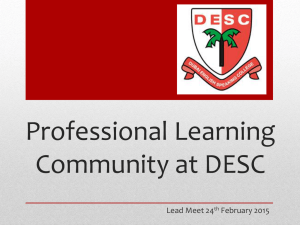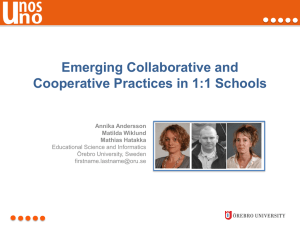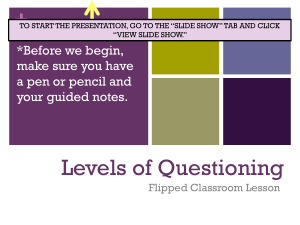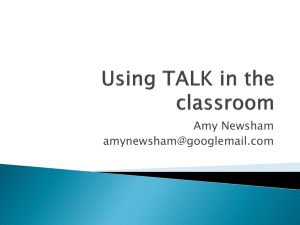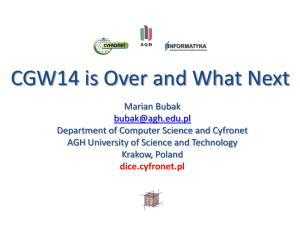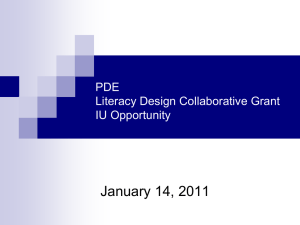PowerPoint - Duplin County Schools
advertisement
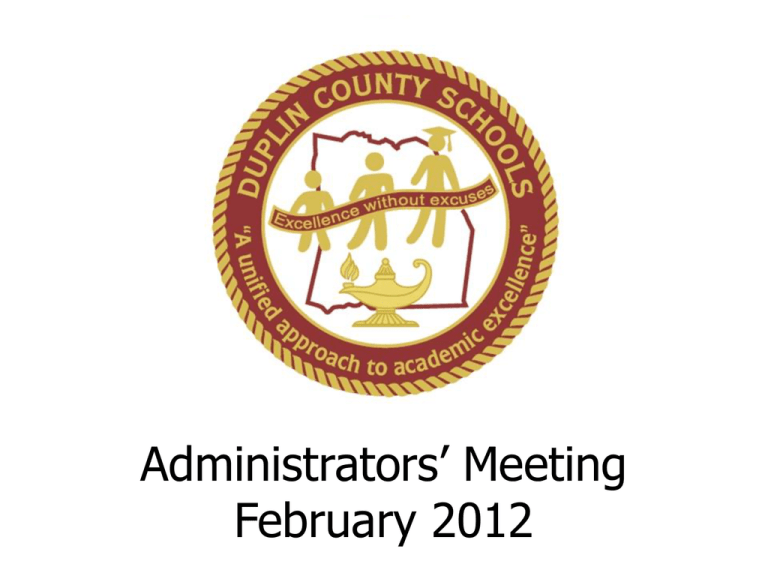
Administrators’ Meeting February 2012 Learning Targets • Participants will acquire in-depth knowledge of Collaborative Group Work and Literacy Groups, two of the strategies of the Common Instructional Framework. • Participants will acquire coaching strategies for the implementation and/or improvement of Collaborative Group Work and Literacy Groups within their school and classrooms. Powerful Teaching and Learning Collaborative Group Work (CGW) & Literacy Groups Collaborative Group Work (CGW) and Literacy Groups • “Key ingredient to creating the kind of school culture in which everyone shares a deep commitment to one another’s success” (UPCS). • Prepare every student academically and professionally for any college or career. • Allow for the use of academic content to teach 21st century survival skills. Collaborative Group Work (CGW) and Literacy Group Planning • Assigning groups – Teacher selected vs. student selected – Strategic grouping to ensure diversity • Change instruction not just the structure – Pre-determining group size • Modifying classroom layout • Incorporating CGW in the lesson plan • Utilizing the CGW Group Monitoring Tool Group Norms • Collectively establishing and posting ground rules for collaborative group work – Importance of adherence – Consequences—conversations tied to the norms • 1st occurrence: Group conference (students only) • 2nd occurrence: Group conference (with teacher) • 3rd occurrence: Student assigned independent work—they leave contributions with the group • Sample norms Group Roles • Establishing group roles – Importance of rotating • Traditional (Samples) – Group Leader/Facilitator, Recorder, Timekeeper, Materials Manager, Task Master, Reporter • Innovative (Samples) – Discussion Director, Vocabulary Connector (Word Wizard), Illuminator (Passage Master), Investigator, Connector (Creative Connector), Artful Illustrator, Summarizer Collaboration Cubes Activity • Discussion Director will record evidence of collaborative problem solving while group discusses the cube. • Discussion Director shares out the answer, one “rule” that gave them the answer, and one point from the Group Monitoring Tool. – Rules and skills translate into the types of critical thinking and collaborative discussions that should occur in every classroom. Literacy Group Activity • Play the Role protocol • Select and explore group roles • Read “Learning as Collaboration: Group Work at University Park Campus School” • Take notes based on your role • Discussion Director leads the conversation in response to everyone’s comments. – Group discussion not individual presentations • Summarizer reports out for each group What do the data make you think? • Susie scored a Level 2 on her 2007-2008 Grade 8 Reading EOG. • Susie scored a Level 2 in sixth and seventh grades, but her elementary scores were consistently higher. • Susie is the oldest of three children who are being raised by a single mother. • Susie’s mother is a college-educated registered nurse. • Susie hates to read, but she likes soccer. • For the past two years, Susie’s reading teachers have used the Brain Buster EOG test-prep series. Common Instructional Framework Resources • Sample lessons/videos – Do you see evidence of the Common Instructional Framework? • Remember the “How” not the “What” • Visit www.newschoolsproject.org and the RttT Team Resources website for more examples • Classroom Walk-Through Form Chalk Talk Protocol • Why is Collaborative Group Work a key ingredient to creating student success? • How does Collaborative Group Work prepare every student for post-secondary education and careers? • How do you plan on implementing and monitoring the use of Collaborative Group Work at your school?


